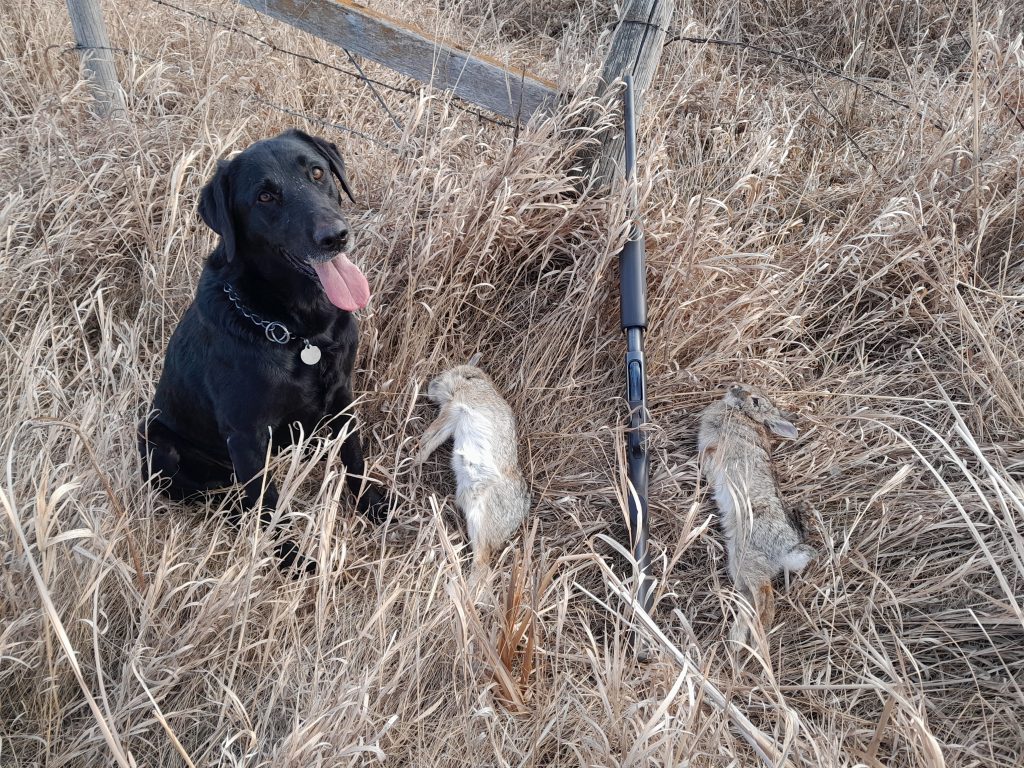Your cart is currently empty!

Beginner or Pro, These are the Best Places to Hunt Rabbits – Your Comprehensive Guide!

Table of Contents
Introduction
Hunting rabbits is a tradition that spans generations, offering both a challenging and rewarding experience for hunters of all skill levels. As an experienced hunter specializing in small game, I’ve learned that success in rabbit hunting is not just about skill with a firearm or stealth in the field; it’s also about knowing where to go. This guide is dedicated to exploring the best places to hunt rabbits across various terrains and regions, providing insights into the habitats where rabbits thrive and the techniques to successfully hunt them.
When we talk about the “best places to hunt rabbits,” it’s not just about pinpointing specific locations. It’s about understanding the environments where rabbits are most abundant and how to approach these areas. Different landscapes offer different challenges and opportunities, from the dense brushlands of Texas to the rolling hills of Pennsylvania. This guide aims to equip you with the knowledge to identify these prime rabbit hunting spots, understand their unique characteristics, and apply effective hunting strategies tailored to each environment.
Moreover, as rabbit populations and their habitats vary across the country, it’s essential to adapt your hunting approach to suit these conditions. Whether you’re a seasoned hunter looking for new grounds to explore or a beginner eager to embark on your first hunting adventure, this guide will provide valuable information to enhance your rabbit hunting experience. Let’s delve into the world of rabbit hunting, exploring the best places and strategies that will lead you to a successful and enjoyable hunt.
Ideal Rabbit Habitats and How to Find Them
Rabbit hunting is as much about understanding the environment as it is about skill with a firearm or trap. Rabbits, particularly cottontails and jackrabbits, have specific habitat preferences that, when understood, can significantly increase your hunting success.
Understanding Rabbit Habitats
Rabbits are creatures of edge and cover. They thrive in areas where two different habitats meet, such as where forests border meadows or where brushy areas intersect with fields. These transitional zones provide rabbits with essential elements: food, shelter, and escape cover. In dense forests or open grasslands, rabbits are less common, as these environments lack the complex structure they require for survival.
Brushy areas are rabbit havens. These locations are often riddled with brambles, thickets, and undergrowth, offering excellent cover for rabbits to hide from predators. In such places, they feed on available greenery, including young shoots, grasses, and even bark in winter.
Fields, especially those with a mix of grass and clover, are also attractive to rabbits. They provide ample food and, if the field borders a thicket or wooded area, quick access to cover. Rabbits are particularly fond of areas that have been disturbed, such as old farms or land recovering from logging, as these places often have a mix of young plants and ample cover.
Forest edges are another prime location. The edges of woods often have a diversity of plant life and provide rabbits with both food and shelter. Look for areas where dense brush or undergrowth meets the tree line.
Identifying Signs of Rabbit Presence
Recognizing signs of rabbit presence is crucial. Rabbit tracks are distinctive, with four toes visible on each foot and a larger hind foot. In snow or soft mud, these tracks are unmistakable. Droppings are another clear sign; rabbit pellets are small, round, and usually scattered in areas where they feed or rest.
Feeding signs are also telling. Rabbits have a penchant for nibbling on young shoots, leaves, and even bark. Look for neatly clipped vegetation, often at an angle, which indicates rabbit feeding activity.
Scouting for Locations
Scouting is an essential part of successful rabbit hunting. Spend time in the off-season walking potential hunting areas. Early morning or late afternoon are the best times to spot rabbits as they are most active during these periods.
When scouting, pay attention to the density and type of vegetation. Areas with a mix of plant life are more likely to attract rabbits. Look for trails or runs – narrow paths in the grass or underbrush that rabbits use regularly. These runs often lead to feeding areas or burrows.
In different regions, the specific habitats may vary. In the Midwest, for example, you might focus on agricultural fields bordering woodlots. In the West, look for rabbits in sagebrush lands or near desert washes. Each region will have its unique hotspots, and understanding these local differences is key.
Remember, patience and observation are your allies. By understanding and identifying ideal rabbit habitats, you’re laying the groundwork for successful hunting excursions, whether you’re a beginner or a seasoned pro. Keep these tips in mind, and you’ll find yourself in the midst of rabbit-rich environments, ready for a rewarding hunting experience.

Top Rabbit Hunting Spots Across the Country
When it comes to rabbit hunting, the United States offers a variety of regions each with its unique characteristics and opportunities. Below, I’ve compiled a list of top-notch rabbit hunting locations across the country, detailing the terrain, optimal hunting times, and specific considerations for each.
1. The Brushlands of Texas
In Texas, the brushlands are a hotspot for rabbit hunters. The terrain here is characterized by dense shrubbery and mesquite thickets, ideal habitats for both cottontail and jackrabbit species. The best time for hunting in this region is during the cooler months, from late October to early March, when rabbits are more active throughout the day.
Local regulations are fairly standard, but always check for specific county rules before heading out. The primary challenge in this area is the dense brush, which requires hunters to be patient and have a keen eye for spotting rabbits.
2. The Farmlands of the Midwest
The Midwest is known for its agricultural landscapes, which are surprisingly conducive to rabbit hunting. States like Iowa and Illinois have vast fields with bordering woodlands, creating perfect edge habitats for rabbits. Winter, after the harvest, is an optimal time for hunting as rabbits tend to be more visible.
In terms of regulations, ensure you’re aware of private land boundaries and seek permission where necessary. One unique opportunity in this region is the chance to engage in ‘driven hunts’ with a group, which can be highly effective in open farmland settings.
3. The Pine Forests of the Southeast
The Southeastern United States, particularly states like Georgia and Alabama, offers expansive pine forests interspersed with brushy areas. These environments are excellent for cottontail rabbits. Late fall through winter is the best hunting period, as the cooler weather makes rabbits more active.
Check state regulations for hunting seasons and bag limits. The challenge here is navigating the dense forest, but the opportunity to combine rabbit hunting with a beautiful woodland experience is unparalleled.
4. The Desert Regions of the Southwest
Areas in the Southwest, such as New Mexico and Arizona, provide a unique rabbit hunting experience in desert landscapes. Here, you’ll find cottontails and jackrabbits in areas with brush and cacti. Early morning or late afternoon during the cooler months is the best time for hunting to avoid the extreme heat.
Regulations may include restrictions on certain public lands, so it’s advisable to check with local wildlife agencies. The open terrain in these areas offers long-range visibility, making it a different hunting experience compared to denser regions.
5. The Rolling Hills of Pennsylvania
Pennsylvania’s rolling hills, with their mix of fields and wooded areas, are ideal for rabbit hunting. The terrain here provides excellent cover and food sources for rabbits. The best hunting season is in the fall and winter, post-harvest.
Local regulations are hunter-friendly, but as always, checking the latest guidelines is recommended. The challenge in Pennsylvania is often the hilly terrain, requiring a good deal of walking and spot-and-stalk tactics.
Each of these regions offers its own unique set of challenges and opportunities for rabbit hunters. Whether you’re navigating the dense forests of the Southeast or the open deserts of the Southwest, understanding the terrain and local regulations is key to a successful hunt. Happy hunting!
Techniques and Strategies for Successful Rabbit Hunting
Successful rabbit hunting requires a blend of knowledge, skill, and strategy. Different environments call for different approaches, and understanding these can greatly enhance your hunting experience. Let’s explore various techniques and strategies that can be applied in rabbit hunting.
Adapting to the Environment
- Still Hunting: This technique is particularly effective in dense brush or forested areas. It involves moving slowly and quietly, stopping frequently to listen and watch. The key here is patience; rabbits will often remain hidden until they’re sure they’ve been spotted. Look for the slightest movement or the shape of an ear or eye.
- Using Dogs: Hunting with dogs is a traditional and highly effective method, especially in open fields or rolling terrains. Beagles are popular for rabbit hunting as they can flush rabbits out of their hiding spots, giving hunters a chance to take a shot. This method requires coordination between the hunter and the dog and is excellent for covering large areas.
- Spot and Stalk: In more open areas like deserts or large fields, spotting rabbits from a distance and then stalking them is a viable strategy. This requires a good pair of binoculars and the ability to move quietly and efficiently.
Mastering the Art of Stealth and Awareness
Stealth is paramount in rabbit hunting. Rabbits have keen senses and can detect movements and sounds from a considerable distance. Move slowly and deliberately, and be conscious of noise from your gear or clothing.
Wind direction is another crucial factor. Always hunt with the wind in your face if possible, as rabbits will pick up your scent if you’re downwind.
Spotting techniques involve looking for not just the rabbit, but signs of them. This includes partial views of a rabbit, such as an ear, eye, or tail, as well as movement. Rabbits often freeze when they sense danger, so learning to spot these small signs can be the difference between success and failure.
Tips for Hunters at All Levels
For Beginners:
- Basic Tactics: Start with still hunting or hunting with dogs to get a feel for rabbit behavior and responses.
- Safety First: Always be aware of your surroundings and follow firearm safety rules. Be sure of your target and what’s beyond it before taking a shot.
- Learn to Wait: Rabbits will often circle back to their original spot, so if you miss a shot or flush one out, wait a while. It might just come back.
For Experienced Hunters:
- Advanced Strategies: Experiment with different hunting styles and terrains. Each environment offers a unique challenge and mastering them can be highly rewarding.
- Patience and Persistence: These are your greatest assets. Rabbits are cautious and can often wait out hunters. Being patient can often lead to more opportunities.
- Refine Your Techniques: Work on improving your stealth, understanding wind patterns, and enhancing your spotting skills. Fine-tuning these aspects can significantly improve your success rate.
Whether you’re just starting out or have years of experience, rabbit hunting can be a rewarding and enjoyable activity. By applying these techniques and strategies, you’ll not only increase your chances of a successful hunt but also deepen your appreciation for the skill and art of hunting.
Related Questions
Best Time of Day for Rabbit Hunting
The best time of day for rabbit hunting typically revolves around their most active periods, which are during the early morning and late afternoon to dusk. Rabbits are crepuscular, meaning they are most active during these twilight hours. During these times, they come out to feed and are more easily spotted. That said, in colder months, rabbits might be active throughout the day as they search for food. For hunters, this means an early start or late finish can be particularly fruitful. Additionally, overcast days can also extend their activity period, offering more hunting opportunities.
Differentiating Between Rabbit Species
Differentiating between rabbit species involves understanding their distinct physical characteristics and behaviors. For instance, cottontails, commonly found across North America, have a characteristic white ‘cotton’ tail and are smaller with shorter ears compared to jackrabbits. Jackrabbits, which are actually hares, are larger, have longer ears with black tips, and longer legs. They are usually found in open, arid environments. Another species, the snowshoe hare, changes color seasonally, turning white in winter to blend in with the snow. Observing their habitat can also be a clue; cottontails prefer dense brush and wooded areas, while jackrabbits are more likely to be found in open fields or prairies.
Essential Equipment for Rabbit Hunting
The essential equipment for rabbit hunting includes a suitable firearm, typically a shotgun (like a .20 or .12 gauge) or a small caliber rifle (.22), depending on the hunting style and local regulations. Shotguns are preferred for moving targets in brushy areas, while rifles are suitable for more open terrains. Additionally, a good pair of hunting boots, camouflage clothing, and a blaze orange vest for safety are crucial. Binoculars can aid in spotting rabbits at a distance. If you’re hunting with dogs, ensure they are trained and equipped with safety gear. Lastly, a hunting license and knowledge of local hunting regulations are mandatory to ensure a legal and ethical hunting experience.
Summary
In summary, finding the best places to hunt rabbits involves a mix of understanding rabbit habitats, adapting to different environments, and employing effective hunting techniques. From the brushy terrains of Texas to the agricultural fields of the Midwest, and the pine forests of the Southeast to the desert regions of the Southwest, each area offers unique challenges and opportunities for rabbit hunters. The key to success lies in tailoring your approach to these diverse environments, whether it’s through still hunting, using dogs, or employing spot and stalk tactics.
Additionally, mastering the art of stealth, being aware of wind direction, and developing proficient spotting techniques are crucial components of successful rabbit hunting. Whether you are a beginner learning the basic tactics and safety measures, or an experienced hunter refining advanced strategies, patience and persistence are your greatest allies. This guide aims to provide hunters of all levels with the insights and tips necessary to navigate the best places to hunt rabbits, ensuring a fulfilling and ethical hunting experience.
Remember, rabbit hunting is more than just a pursuit; it’s a way to connect with nature, practice wildlife conservation, and enjoy a time-honored tradition. By understanding the habitats, adapting to the environments, and applying the right techniques, you can enjoy the rich and rewarding experience that rabbit hunting has to offer.

Herb has been a longtime lover of the outdoors. Whether it be hunting, camping, fishing or just getting outside to reset. Proud father and animal lover. Bourbon anyone?

by
Tags:
Comments
One response to “Beginner or Pro, These are the Best Places to Hunt Rabbits – Your Comprehensive Guide!”
-
[…] we conclude this comprehensive guide on rabbit hunting, it’s essential to reflect on the key aspects that contribute to a successful hunt. Understanding […]

Categories
- Big Game Hunting (301)
- Deer (202)
- Reviews (3)
- Shooting (16)
- Slingshot (1)
- Small Game Hunting (42)
- Upland Hunting (126)
- Waterfowl Hunting (3)





Leave a Reply